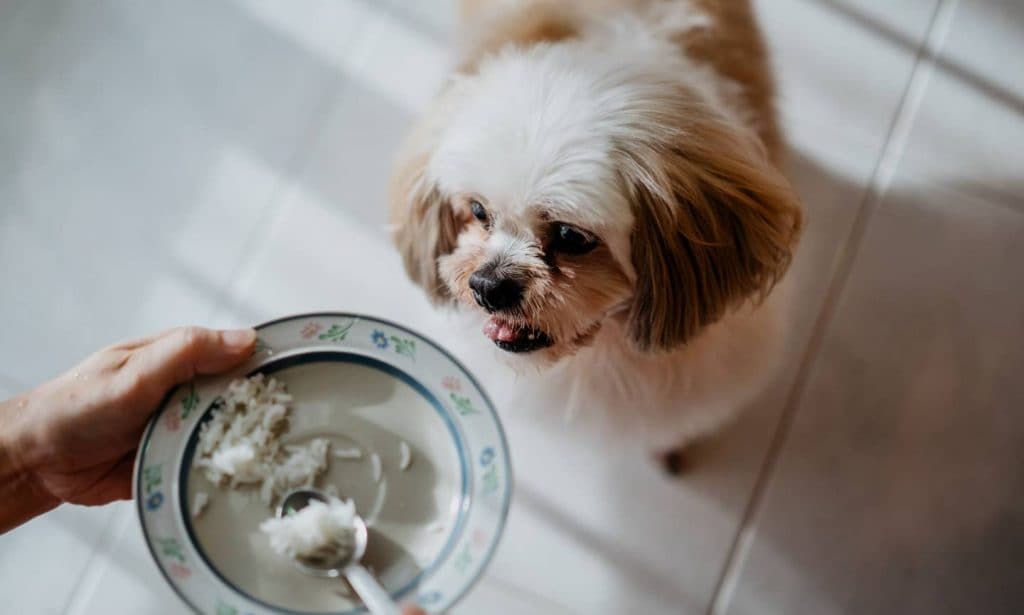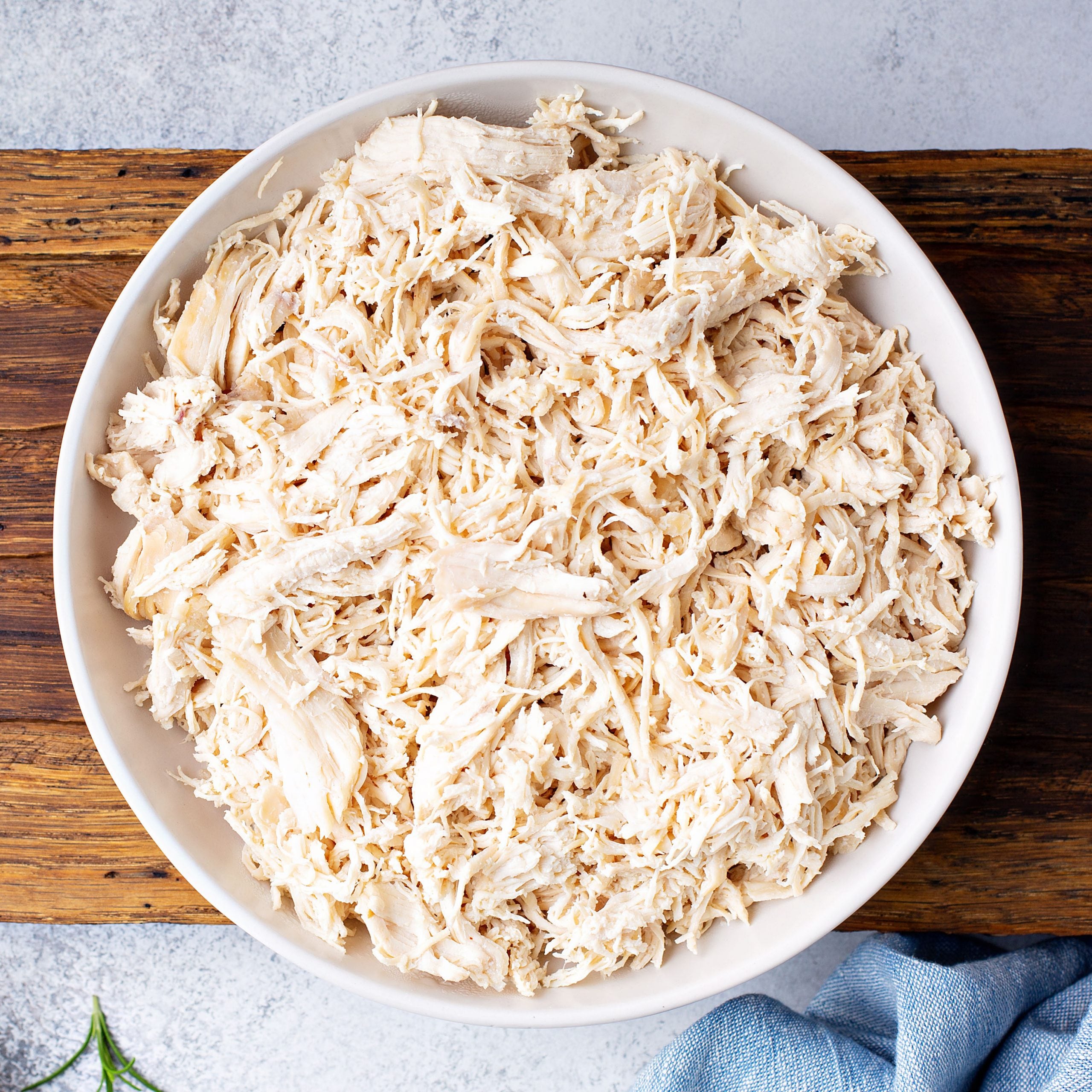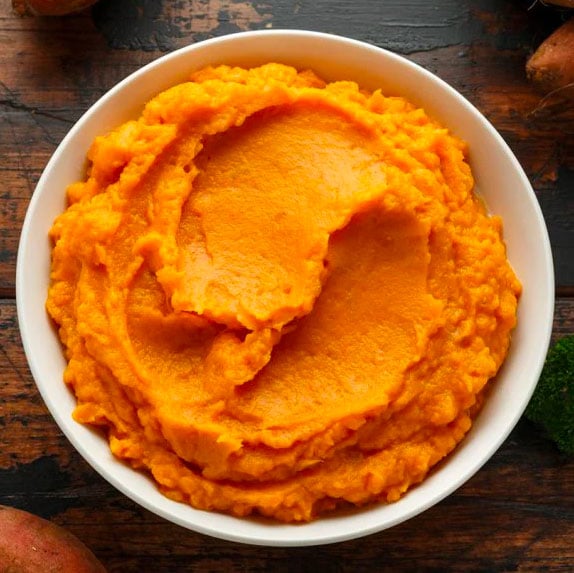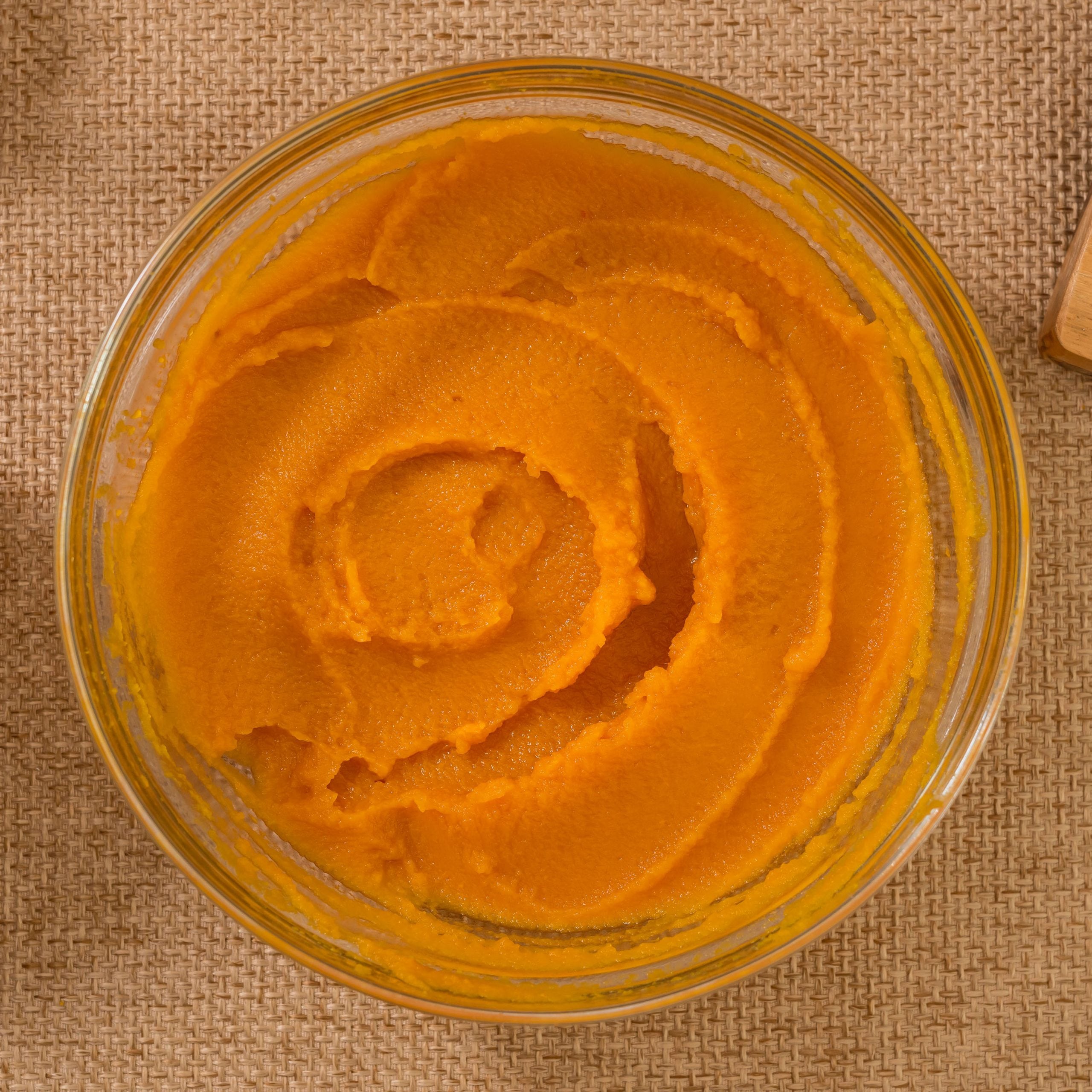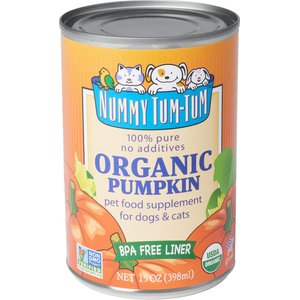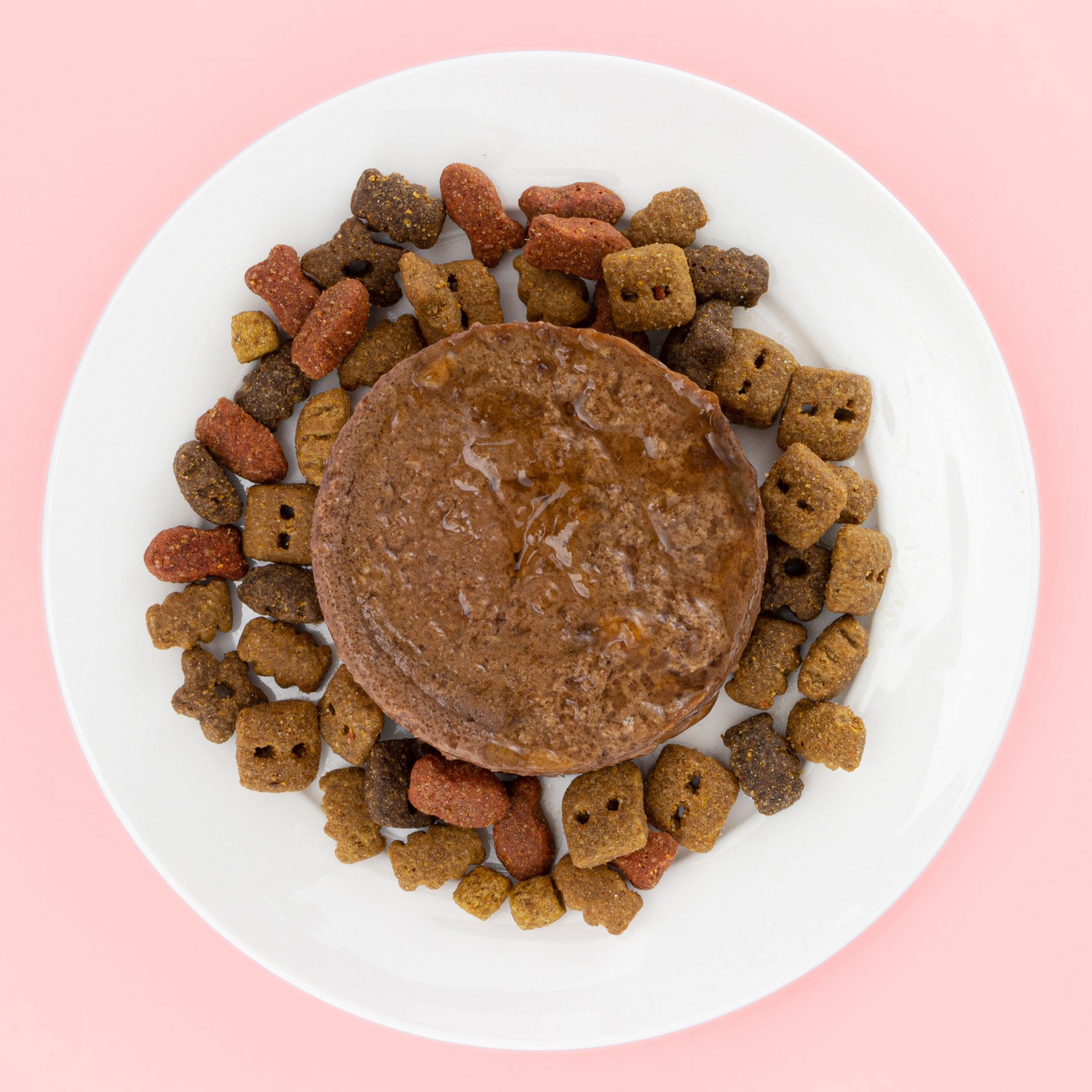No one wants to deal with dog diarrhea. While there are many possible causes of diarrhea, your furry friend eating human food or table scraps can be a common source of the dread “runs.”
So, what do you feed a dog with diarrhea? Here’s what you need to know.
In This Guide:
Is My Dog’s Diarrhea an Emergency?
Before we can even talk about what to feed a dog with diarrhea, you need to rule out a medical emergency that needs immediate veterinary attention. Diarrhea in dogs is sometimes mild and self-limiting, but it can sometimes be severe or life-threatening. Whether or not the diarrhea is mild or severe, you should contact your vet for advice at the first sign of diarrhea.
Some signs that your dog may need to see a vet include:
- Vomiting and diarrhea
- Bloody diarrhea (bright red blood or clots in the poop) or diarrhea that has digested blood (which appears dark and tarry)
- Diarrhea that has lasted longer than two days
- Signs of dehydration, including dry gums and skin tenting (aka skin that doesn’t snap back into place when you pull it)
- Loss of appetite
- Fever
- Signs of abdominal pain (bloating, groaning, panting rapidly, not wanting to be touched, or “prayer position,” aka a stance with the dog’s rear up in the air and their front legs and head on the floor)
- Acting excessively tired or weak
In some dogs, diarrhea is always an emergency. Call your vet at the first sign of diarrhea in the following pets:
- Puppies
- Senior dogs
- Dogs who are already sick or debilitated due to a pre-existing condition such as diabetes or heart disease
- Dogs on new medication (which could be causing the diarrhea)
- Dogs who may have ingested any toxins or poisons
If your dog fits any of these criteria, contact your vet for advice immediately.
When to Feed a Dog With Diarrhea
OK, you have confirmed with your vet that your dog's diarrhea is mild and does not meet any of the emergency criteria listed above, so you’ve decided you’re ready to feed your dog. But is your dog’s body ready for food?
Whether your dog has a single bout of diarrhea or has had multiple episodes of loose stools, your veterinarian may recommend resting your dog’s gastrointestinal (GI) tract. Resting the GI tract by withholding food for a short period of time allows the intestines to heal because they aren’t busy digesting food.
How long should you withhold food after an episode of diarrhea? The answer depends on several factors, including:
- The overall health, age and size of the dog
- The underlying cause of diarrhea
- Any medications that are being administered
For healthy, adult dogs, your veterinarian may recommend withholding food for around 12 hours. If your healthy adult dog has a single bout of diarrhea in the morning, withhold food for the day and offer a small amount of bland food at dinner time. (More on that below.) If your dog has diarrhea in the evening, withhold food for the rest of the evening and offer a small, bland meal in the morning. Do not withhold water; provide fresh, free access to water at all times.
There’s one important exception to this rule: Do not withhold food from dogs who need regular feeding to survive, including:
- Puppies
- Toy breeds, like Chihuahuas and Maltese
- Senior dogs
- Dogs with health issues
Withholding food from these dogs can lead to dangerously low blood sugar levels and other emergencies. For these dogs especially, consult your veterinarian at the first sign of diarrhea.
When your vet tells you to start refeeding your dog, they will likely tell you to start small and gradually increase.
- For small breeds, start with 1 tablespoon of food.
- For large breeds, start with a golf ball-sized portion of food, around 2 tablespoons.
You may offer these amounts every 2-3 hours, and if your pet tolerates this, slowly and gradually increase to offering up to ¼ to ½ cup every 4 hours.
What to Feed a Dog With Diarrhea
It’s finally time for your dog to have a small meal—but what do you feed a dog with diarrhea?
Here are six common suggestions:
1 Lean Protein
Good for dogs with an upset stomach, low-fat meats are gentle on your dog’s stomach while still providing important protein. Try lean protein sources such as:
- Chicken breast (no skin)
- Lean ground hamburger
- Turkey
To Prepare: Chop into small bites, boil until uncooked, then drain. Do not add seasoning, oil, butter or salt.
2 White Rice
To Prepare: Rinse the rice well, then follow the instructions on the rice package. Serve at room temperature. You might consider adding lean protein (see above) to make a 50/50 mixture of lean protein and rice.
3 Potatoes
To Prepare: Cut into bite-size pieces and boil or bake until cooked through. Do not fry or add butter, seasonings or salt.
4 Canned Pumpkin
Plain canned pumpkin can be very helpful for some dogs with diarrhea because of the high fiber content, which helps to regulate the digestive system. Pumpkin’s blend of soluble and insoluble fiber can be an effective remedy for both diarrhea and constipation. Learn more about the benefits of pumpkin for dogs.
Do note, though, that plain canned pumpkin is different from pumpkin pie filling, which also comes canned and can look similar. Do not serve pumpkin pie filling to dogs, as it is usually full of additives, spices, sugars and sometimes Xylitol, which can be deadly to dogs.
5Veterinary Diet Dog Food
Many dog food brands have therapeutic lines that target specific health issues, including diarrhea. Some therapeutic diets are formulated to specifically address the cause of diarrhea and resolve it, and typically require an authorization from your vet. Some widely used therapeutic foods for dogs with diarrhea include Hill's Prescription Diet i/d Digestive Care, which helps soothe the digestive tract, and Purina Pro Plan Veterinary Diets EN Gastroenteric Formula, which is designed to promote optimal nutrient absorption and total digestibility.
Depending on the cause of your dog’s diarrhea, your dog may benefit from food made for specific health conditions. For example, feeding a hypoallergenic food or a novel protein food (food made from a type of protein your dog has not eaten before) may help dogs who suffer diarrhea due to allergies. Learn more about food allergies.
6Dog Food for Sensitive Stomachs
Other commercial dog foods are formulated to help dogs with GI problems and do not require an authorization from your vet. These include Hill's Science Diet Adult Sensitive Stomach & Skin Dry Dog Food, which includes prebiotic fibers to assist in digestion; and Purina Pro Plan Adult Sensitive Skin & Stomach Dry Dog Food, which contains live probiotics to regulate your pup’s gut.
These foods may not help all dogs, but they can be helpful in some cases. If you don’t notice any improvement within a day or two of feeding this food, consult your vet.
How to Switch Back to Your Dog’s Normal Diet
Continue feeding your dog a bland diet until their stools have been normal for two to three days. In the meantime, you can slowly increase the amount of food you give them, if your dog will tolerate it. Remember: If your dog’s diarrhea has lasted longer than two days, call your vet.
When it’s time to transition back to your dog’s normal diet, your vet will tell you to make the switch slowly from the new food to their usual food. Making sudden changes to your dog’s diet may upset their stomach yet again.
Here’s how to make the transition:
- Start by mixing a small amount of your dog’s usual food with the bland food.
- Over three to five days, slowly increase the ratio of regular food to bland food until your dog’s diet is 100 percent back to normal and you start to see normal bowel movements.
Shop Related Products on Chewy
Other Dog Diarrhea Solutions
Sometimes, bland food is not enough to stop the diarrhea. Additional support, such as over-the-counter medications or supplements, may be useful to help resolve the problem.
But before you offer any of the below to your dog, consult your veterinarian. They’re in the best position to assess your dog’s condition and determine what treatments will most effectively treat it.
Probiotics
Think of probiotics as the “good guys” in your dog’s gastrointestinal tract. When “bad guys” like clostridium, E. coli, or salmonella overgrow inside your dog’s gut, they can throw the whole system out of whack, resulting in diarrhea. Probiotics are beneficial bacteria that help resolve diarrhea by restoring that internal balance.
If your dog is on an antibiotic, consult your vet to make sure probiotics are right for your dog. If they are, separate administration of probiotics and antibiotics by at least one hour to prevent the antibiotic from killing the probiotics and choose a probiotic that has guaranteed live bacterial colony forming units, or CFUs. Many products list a CFU count right on the label of ingredients. Vibeful Probiotic Gastrointestinal Support Powder Digestive Supplement for Dogs, for example, comes packed with 200 million CFUs.
See the best probiotics for dogs as rated and reviewed by our panel of veterinarians.
Kaolin Clay and Pectin
Kaolin and pectin are ingredients protective of the intestinal lining and may help resolve diarrhea.
Vetoquinol Pro-Pectalin Diarrhea Supplement contains both to maintain proper gut pH, support normal digestive function and aid in reducing occasional loose stools due to environmental stress or dietary changes.
FAQs About What to Feed a Dog With Diarrhea
Q:
Can fruits help a dog with diarrhea?
Q:
Can vegetables help a dog with diarrhea?
Q:
What should I not feed a dog who has diarrhea?
To recap:
- Consult your vet if your pet has diarrhea, especially if there is blood, it lasts longer than 2 days, or there are other symptoms such as vomiting, not eating or lethargy.
- Withhold food for 12 hours to let your dog’s GI tract rest and heal. (Consult your vet before withholding food, especially from puppies, small breeds, senior dogs and dogs with health issues.)
- Serve a bland diet starting with small amounts and gradually increasing. Always offer water.
- When your dog’s stools have returned to normal for two to three days, gradually reintroduce their usual diet.
- Call your vet if your dog’s diarrhea does not resolve within two days.
-
Diarrhea is one of the ickiest parts of pet parenting—but you can help speed your pup’s recovery by knowing what to feed a dog with diarrhea. Before long, both you and your dog should be back to normal—and if symptoms persist after two days, your vet can help, too. Next, learn even more about dog diarrhea.
This content was medically reviewed by Chewy vets.
More on dogs and diarrhea:
Share:
